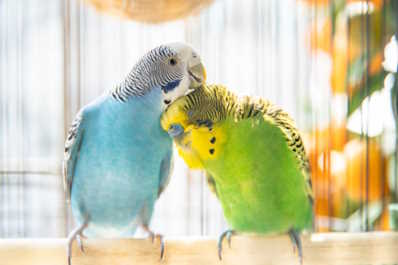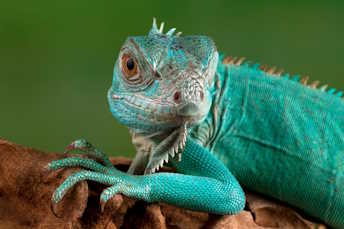The Aquatic Menu: What’s Off-Limits for Your Underwater and Amphibious Pals

Both owners and enthusiasts will agree that a well planned and maintained aquarium is a marvelous thing. Maintaining a vibrant and thriving underwater kingdom in your home is a delight second to none, but achieving that comes with more than just setting up the tank. Just like land pets, aquatic dwellers have insatiable appetites and dietary needs of their own. In this guide, we’ll chart a course through the treacherous waters of fish, crab, and frog diets, steering clear of the culinary pitfalls that could sink your pets’ health.
Understanding the Nutritional Palette
Each citizen of the tank or terrarium has a distinct set of gastronomic requirements. Fish, with their sleek bodies and the constant motion of water, demand a diet rich in protein for growth and repair, complemented with an array of vitamins and minerals. Crabs, the on-land explorers of shells, are omnivores that often gorge on anything edible; they need calcium and iodine for a sturdy shell and trace elements for metabolic functions. Frogs, the leapfrogs of the amphibious world, relish high-protein diets that include insects and, in the case of some species, a side of greens.
Foods to Avoid for Fish
The seemingly benign act of feeding your fish could be a sinister affair if you’re not aware of the items that are forbidden. Processed human foods stuffed with preservatives and additives can wreak havoc on a fish’s digestive system. For instance, any foods with garlic, onion, and heavy grains, such as bread, are a hard ‘no’. Even seemingly innocuous items like spinach and skinless peas can lead to digestive distress. Trust me; your fish will not appreciate a meal that doubles as a laxative.
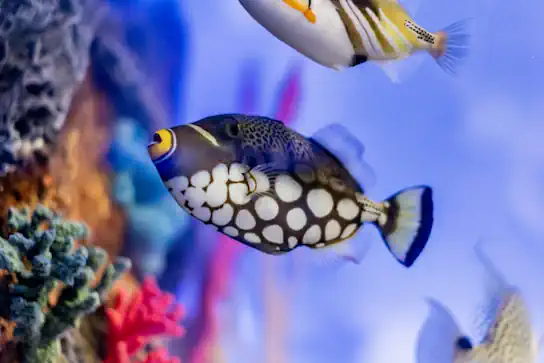
Here are the top 10 foods for fish owners to absolutely steer clear of when feeding your fishy friends:
Bread and Pasta: These starchy foods can expand in a fish’s stomach, leading to bloating and digestion problems.
Chocolate: It might be a treat for humans, but for fish, chocolate is toxic due to theobromine.
Onions and Garlic: These contain compounds that can be harmful to fish, potentially leading to anemia or gastrointestinal upset.
Milk and Dairy Products: Fish cannot process lactose, making dairy a poor choice that can lead to health issues.
Salted Foods: Excess salt can disrupt the electrolyte balance in fish, leading to serious health issues.
Fruits with High Citric Acid: Oranges, lemons, and limes can disrupt a fish’s delicate pH balance.
Raw Meat: This can introduce harmful bacteria into the tank and is not suitable for a fish’s digestive system.
Avocado: Contains persin, which is toxic to fish.
Sweets and Sugary Foods: Can lead to obesity and does not provide any nutritional value for fish.
Coffee or Tea: Contains caffeine, which is harmful and can lead to hyperactivity and heart issues in fish.
These items, while commonplace in our diets, can pose significant risks to your aquatic pets, so it’s best to leave them out of the tank.
Foods to Avoid for Crabs
Crabs, like finicky toddlers, will eat almost anything, but that doesn’t mean they should. Foods high in fat—buttered popcorn, for example—or salt, like potato chips, are strictly off the menu. Sugary treats may entice their sweet-tooth but will spell sugar-induced sickness in the long run. Human food designed for humans, especially junk food, can be fatal for these crustaceans, leading to problems ranging from obesity to heart disease.
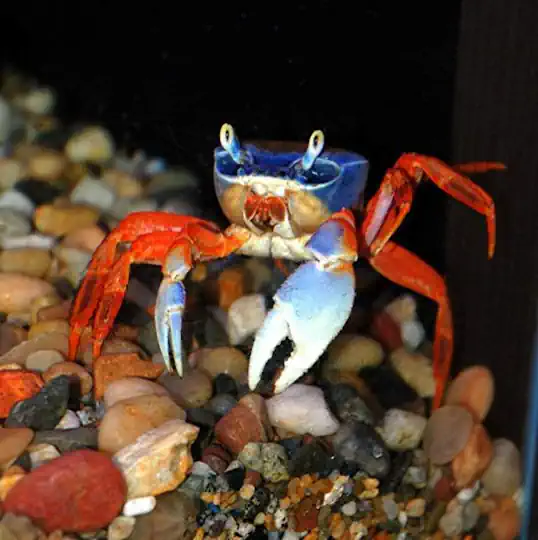
Here’s a cozy heads-up on what not to share with your crustacean companions. Just because they look eager, doesn’t mean it’s good for them. Remember, we’re aiming for happy, healthy crabs, not little shell-dwellers with upset tummies.
Chocolate and Caffeinated Products: While we might relish a good chocolate bar or a cup of coffee, these are no-gos for crabs—caffeine and theobromine are toxic to them.
Alcoholic Beverages: It might sound amusing to imagine a crab sipping on a tiny cocktail, but alcohol is harmful to their little systems.
Salty Snacks: Just like us, crabs can’t handle too much salt. It can disrupt their fluid balance, leading to health issues.
Fried Foods: The oils and fats in fried foods are tough on a crab’s digestive system and overall health.
Onions and Garlic: These kitchen staples can be toxic to crabs, leading to gastrointestinal issues or worse.
Citrus Fruits: The high acidity can mess with their internal pH balance, so it’s best to keep oranges, lemons, and their citrusy kin away.
Dairy Products: Crabs aren’t equipped to digest lactose, making milk, cheese, and other dairy products a poor choice.
Sugary Foods and Sweets: Just like with other pets, too much sugar can lead to obesity and related health complications in crabs.
Processed Human Foods: Foods loaded with preservatives and additives can wreak havoc on their health.
Raw Meat or Undercooked Foods: They can introduce harmful bacteria into your crab’s environment, posing a risk to their health.
Keeping these items off the crabby dinner table will help ensure your shelled friends lead a long, merry life under your care.
Foods to Avoid for Frogs
When it comes to frogs or toads, the divided plate of Greens and Bugs is a delicate balancing act. Insects with hard exoskeletons, like beetles, can be too tough for many small frogs to digest. Plants high in oxalic acid, such as rhubarb, can bind calcium and lead to malnutrition. Even the beloved firefly is a bioluminescent beetle that is, unfortunately, a toxic treat. Frog feed must be more than just whatever’s hopping about but a conscious selection of sustenance that promotes vitality rather than sickness.
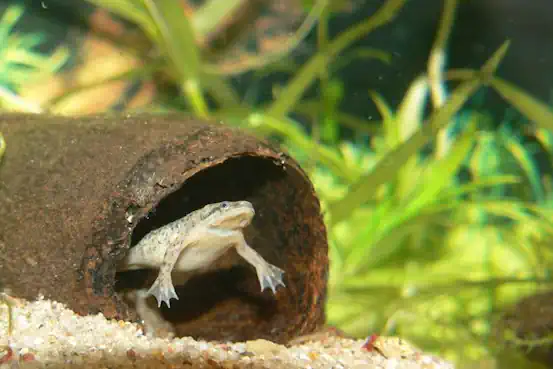
When planning meals for your hopping companions, it’s crucial to keep their dietary needs and restrictions in mind. Here is a list of the top 10 foods to avoid to keep your frogs happy and healthy:
Insects with Hard Shells: Beetles and other hard-shelled insects can be difficult for frogs to digest.
Fireflies: Although they might seem like an interesting snack, fireflies are toxic to frogs.
Plants with High Oxalic Acid: Vegetables like rhubarb can bind calcium, leading to malnutrition.
Chocolate: Just like with many pets, chocolate contains theobromine, which is toxic to frogs.
Onions and Garlic: These common kitchen ingredients can harm frogs, similar to their effects on many other pets.
Dairy Products: Frogs cannot process lactose, making any dairy products unsuitable.
Caffeinated Foods and Beverages: Caffeine can be harmful to frogs, causing hyperactivity and heart issues.
Salty Snacks: Excess salt can disrupt a frog’s fluid and electrolyte balance, leading to health problems.
Sugary Foods and Sweets: These can lead to obesity and do not provide any nutritional value for frogs.
Citrus Fruits: The high acidity level can upset a frog’s internal pH balance, making these fruits a poor choice.
By avoiding these foods, you can help ensure that your frog leads a long and healthy life. Remember, a diet closest to their natural one—comprised mainly of live insects—is typically the safest and most nutritious choice for your amphibian friends.
Healthy Alternatives
The key to an underwater or amphibious diet isn’t just about what you avoid—it’s about what you include. For fish, live food like brine shrimp or mosquito larvae provides a protein-rich punch unmatched by their processed counterparts. For crabs, high-calcium and iodine-rich foods such as algae, as well as cuttlebone or fish flakes, create the right recipe for their well-being. And for frogs, a weekly salad of mixed greens alongside their staple live, protein-rich feed just might make them leap for joy.
Top 5 Foods for Fish
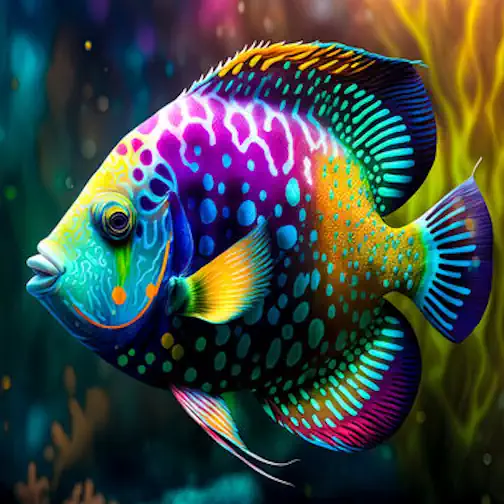
Taking care of your aquatic friends means more than just keeping their tanks clean; it’s also about providing them with the right nutrition. Here’s a warm-hearted guide to the top 5 foods that will keep your fish swimming happily:
Brine Shrimp: A delicious treat for fish, brine shrimp are packed with protein and are perfect for both freshwater and saltwater fish. They are often in with other frozen foods and may need to be thawed before feeding.
Bloodworms: These are a favorite among many fish species. Bloodworms, whether live or frozen, provide a good source of protein.
Algae Wafers: Ideal for herbivorous fish, these wafers are not only tasty but also full of necessary nutrients and fiber.
Daphnia: Also known as “water fleas,” daphnia are a great source of vitamins and fatty acids, making them a healthy snack for your fish.
Pellets or Flakes: Specifically formulated fish food pellets or flakes can offer a balanced diet tailored to your fish’s specific dietary needs, including vitamins, minerals, and protein.
Remember, while it’s fun to treat your finned friends to a fresh water varied diet, make sure to research their specific needs to ensure a happy and healthy life below the water surface.
Top 5 Foods for Crabs

Caring for crabs involves offering them a diet that closely mimics their natural preferences. By providing a balanced mix of nutrients, you can ensure your crabs thrive in their habitat. Here’s a cozy rundown of the top 5 foods that will keep your crabs clambering with joy:
Algae and Seaweed: These are not only natural foods for crabs but are also rich in iodine and essential vitamins, helping to mimic their oceanic diet. Adding live plants to the aquarium can have many benefits in addition to being a source of nutrition.
Cuttlebone: Rich in calcium, cuttlebone is a fantastic supplement for crabs, contributing to their shell health.
Fish Flakes: For protein, fish flakes are an easy and nutritious choice, ensuring your crabs get the necessary nutrients for their overall health.
Fresh Fruits and Vegetables: Offering a variety like leafy greens, apples, or carrots, cut into small pieces, can provide your crabs with vitamins and moisture.
Lean Proteins: Cooked chicken, turkey, or fish, shredded finely, can be great for adding variety and essential proteins to their diet, just be sure to offer these sparingly and ensure they’re plain and unseasoned.
Offering these foods in moderation, alongside their regular diet, will surely keep your crabby companions happy and healthy. Just remember, the key is diversity and balance in their diet for optimal health.
Top 5 Foods for Frogs
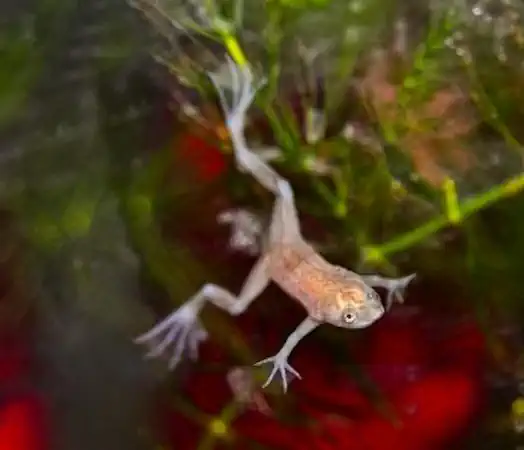
Ensuring your froggy friends thrive means offering them a diet that’s both nourishing and exciting. Here’s a heartwarming look at the top 5 foods that will have your frogs hopping with joy:
Crickets: These are a staple in the frog diet, providing essential protein and nutrients. Offer them live for an engaging feeding time.
Mealworms: Another great source of protein, mealworms can be a delicious treat for your frogs. Ensure they are appropriately sized for the frog to prevent choking.
Earthworms: Rich in nutrients, earthworms can be a scrumptious snack for most frogs, mimicking their natural wild diet.
Waxworms: These should be given sparingly as a treat due to their high fat content, but they’re a tasty change of pace for most frog species. These small worms are like candy for many frogs.
Flightless Fruit Flies: Ideal for smaller frogs or younger frogs, these provide nutrition and the fun of the hunt without the risk of escape.
By including these foods in your frogs’ diet, you’re not just feeding them; you’re giving them a little slice of the wild that keeps their instincts sharp and their health in tip-top shape. Just remember, variety is the spice of life, especially for your amphibious companions.
Ensuring the Optimal Diet
Maintaining a healthy diet for your aquatic friends is more than just shopping for the right foods. You must consider the nutritional value, the frequency of feeding, and the portion sizes that fit the species. Beyond that, ensuring the cleanliness and correct pH levels of the water or terrarium environment is critical for their digestive health. Think of it as crafting a bespoke meal plan for each pet, tailored to their every health need and with their tastes in mind.
Conclusion
By steering clear of the dietary pitfalls and navigating towards responsible pet care, you ensure not just the survival, but the thriving, of your underwater companions. The depths of your aquarium are a world unto themselves, and you hold the key to their vitality. In committing to their dietary well-being, you’re committing to the harmony of your aquatic ecosystem at large. Your cautious approach will mean a lifetime of health and happiness for all the creatures that call your aquatic abode home. Happy feeding!
Frequently Asked Questions (FAQs)
Can I feed my fish only one type of food from the list?
While it might be tempting to stick with one type of food for convenience, it’s crucial to provide a varied diet. Different foods offer different nutrients, and a mix ensures your fish receive a balanced diet.
How often should I feed my crabs?
It’s best to feed adult crabs once a day, preferably in the evening. For younger crabs or those with high metabolic rates, twice a day may be necessary. Watch their eating habits and adjust accordingly to avoid overfeeding. Some crabs like to eat fish they catch in the fish tank. If fish are missing, your crab might not make for good tank mates with the others in the same tank.
Are live foods better than prepared foods for frogs?
Live foods can stimulate your frogs’ natural hunting behaviors and provide enrichment. However, high-quality prepared foods are formulated to meet nutritional needs and can be a convenient alternative. A combination of both can be beneficial.
How do I know if I’m feeding my pets too much or too little?
Observe your pets after feeding; if all the food is rapidly eaten and they still seem to be searching for more, you might need to offer a little more next time. Conversely, if food is left uneaten, you might be offering too much. Adjust the portions as needed while being mindful of the risk of overfeeding. As weird as it may sound, watching their behavior is just as important as it is with other pets.
Can I offer human foods to any of my aquatic or amphibious pets?
While some fresh fruits and vegetables or lean proteins (plain and cooked) can be suitable in small, infrequent portions, many human foods contain seasonings, oils, or other components that can be harmful. Always research before sharing your snacks.
By keeping these FAQs in mind, you ensure not only the survival but the flourishing of your underwater and amphibian friends. It’s all about understanding and catering to the unique needs of each pet, ensuring they lead a happy, healthy life.
